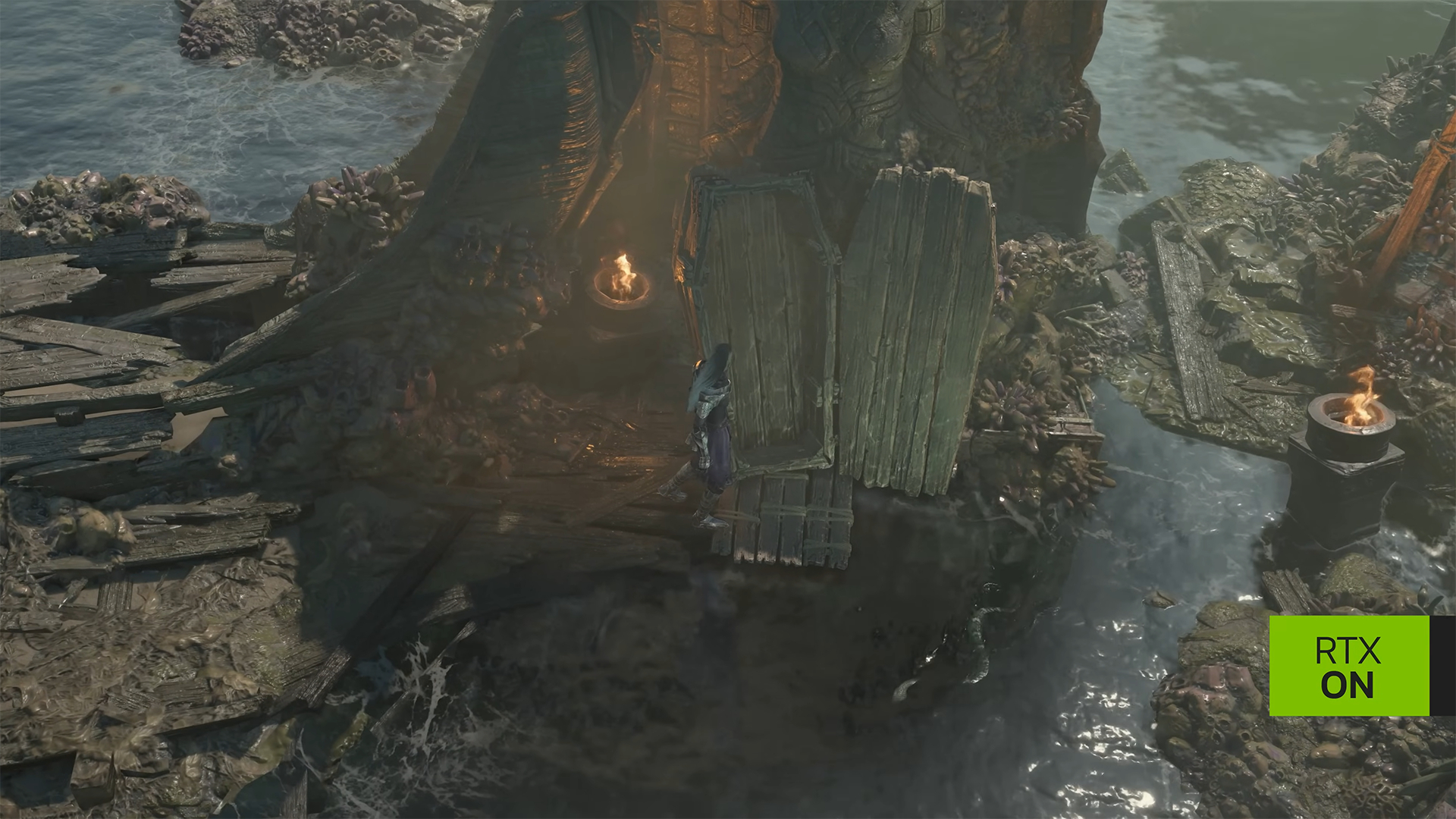
Nvidia would like you to know that Diablo IV's ray tracing update is finally available — in case you took a break from the game while waiting. It also announced several more games with DLSS 2 upscaling and/or DLSS 3 frame generation technologies. These include Outpost: Infinity Siege, Alone In The Dark, and Lightyear Frontier Out.
The biggest draw will likely be Diablo IV, which seemed to have plenty of headroom for enhanced visuals when we tested it at launch last year. It already supported DLSS 3, but now the developers have added ray-tracing effects. That should bring the fps down while enhancing the atmosphere of the game, and the new visuals include ray-traced reflections and ray-traced shadows.
According to technical director Michael Bukowski, "Effects like lightning strikes are now reflected in pools of blood and water, dank cellars and dungeons are more foreboding with realistic soft shadows, and the open world and towns are more grounded with additional realistic shadows and reflections. We are very excited for our community to experience this new technology."
According to Nvidia benchmarks, gamers can expect up to a 3.1X performance multiplier when utilizing DLSS upscaling and frame generation together. At 4K max settings with RT enabled, Nvidia's RTX 4090 achieves 144 FPS, RTX 4080 Super 117 FPS, RTX 4070 Ti Super 103 FPS, RTX 4070 Super 91 FPS, and RTX 4070 77 FPS. Nvidia neglected to tell us how well the game runs without frame generation, sadly.
Outpost: Infinity Siege is a new first-person shooter hybrid with base-building capabilities reminiscent of the game From The Depths. The game launched with DLSS 3 support but no ray tracing. As a result, according to Nvidia benchmarks, the game runs exceptionally well with frame generation.
Benchmarks reveal that the RTX 4090 can achieve 160 FPS at 4K max settings, 129 FPS on the RTX 4080 Super, 115 FPS on the RTX 4070 Ti Super, 101 FPS on the RTX 4070 Super, and 88 FPS on the RTX 4070.
Alone In The Dark is a reboot inspired by the cult classic horror games of the 90s. The game features actors Jodie Comer (from Free Guy) and David Harbour (from Stranger Things and Black Widow) in an environment set in the Gothic American South of the 1920s. The game arrives with DLSS 2 upscaling to boost performance on compatible GeForce RTX hardware.
On the opposite side of the spectrum is Lightyear Frontier, a peaceful open-world farming game set on a planet at the far edge of the galaxy. In the game, you set your homestead and farm crops with futuristic robotic vehicles. Unlike most other Si-Fi games, there's no combat in this game, giving you a stress-free experience managing your abode. The game arrives with DLSS 2 and DLAA support, giving RTX gamers ways to improve performance or boost image quality.
Nvidia also reiterated that Horizon Forbidden West is available now with DLSS 3 support, though the PC port arrived last week. Nvidia provided benchmarks with DLSS featuring most of its RTX 40 series GPUs. Alternatively, you can check our own tests of Horizon Forbidden West where we benchmarked over two dozen Intel, AMD, and Nvidia GPUs, plus the Steam Deck, to see how the game performs.
(Spoiler alert: The game performs very well on most GPUs, provided you're not trying to max out settings. Cards with 8GB or less VRAM don't particularly care for the maximum settings but should do fine at medium quality.)







